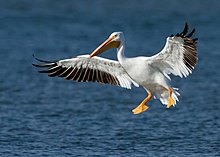 |
| Here's my 1995 M3 in the foreground and my 1978 320i. |
The BMW e36 is a great car. But all cars after 30 years start to show issues. One of the well known issues with this car is the interior, particularly the door panels. This is a quick overview on how I restored the ones on my car, a 1995 M3.
 |
| New skin on left old on right. |
The door panels were delaminating, it is a common problem with few readily available solutions. Few new panels are available, they are quite expensive. Used ones seem to all have the same delamination problems. An internet search brought up a few options that looked possible. The biggest issue seems to be finding the fabric needed and then fitting it to the door. The original was vacuum molded to the door, not really an option for a shade tree mechanic as my self.
 |
| Old and new in direct sun. |
 |
| Old and new under LED lights |
The material is automotive leatherette and you have the option of selecting the color thread used to sew it. He also offers the panels in leather at an increased price. He also offers seat coverings and other products. You can see his other products on the auction site, his handle is g_r_e_a_t.
Once I had the new covers in hand the next step was to remove the door panels and begin the restoration. I removed the speakers and everything else I could. While the panels were off I replaced the window sliders and adjusted the windows. I also had to replace the top door panel brackets and reattach the pockets and backing pieces. For this I used liquid nails, it's what I had in my shop, but any construction type adhesive would work.
 |
| Gluing on the pockets |
Once that was done it was time to strip the old covering off. The gray covering peeled off pretty easy, but the insert gave me a bit of a fight. I ended up using plastic trim tools, putty knives, and in the end a small flat bar. The gray covering went under the insert and I worked under it in the hope of proving some cushioning to the insert. My inserts are leather and are in reasonably good shape and I didn't want to damage them. It was a fight but I got it off without and damage to the inserts or the door panel. The panel is some kind of pressed cardboard, if I did damage it I would try putting fiberglass on the back to reinforce it and sand and putty the front. The passenger door covering came off easy but the insert was a fight. The driver's door was just the opposite as the insert popped right off but the covering gave me a fight.
 |
| Gluing on the new top bracket |
 |
| A heat gun helps loosen the glue. |
 |
| Bare panel |
Some recommend contact cement, I strongly suggest that it not be used. The problem with it is if you touch the piece to the cement in the wrong place you're screwed, it's stuck.
 |
| You'll need these! 9$ per hundred on eBay. |
 |
| Almost finished. |
The last part is cleaning it up, a cloth with a little acetone on i removed all of the glue, a good cleaning with a vinyl cleaner/restorer on the new covering and a leather dressing on the insert, and to fold over the new covering around the edges. Hot glue worked well for this. Lastly I'll be replacing the speakers before reinstalling it back onto the door.
I hope this makes sense to those hoping to restore their door panels. I'll check back here every now and the and try to answer your questions. Good luck!
 |
| A hot glue gun worked to hold the overlap on. |
 |
| Driver's door pockets needed a little help, plus a small dent needed putty, near corner |

















